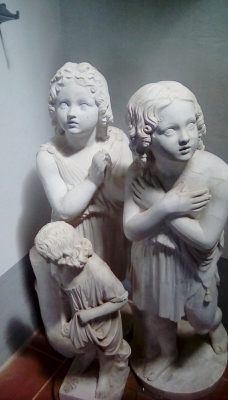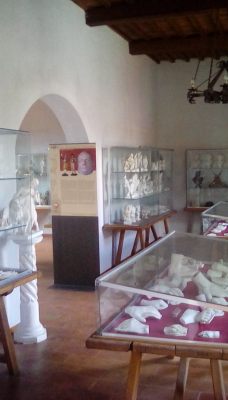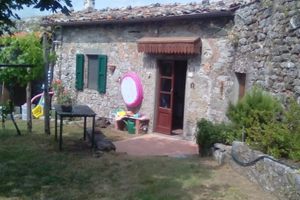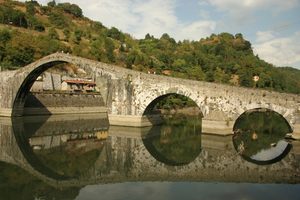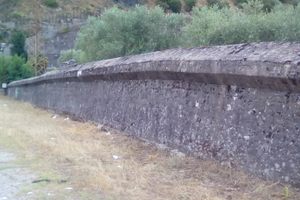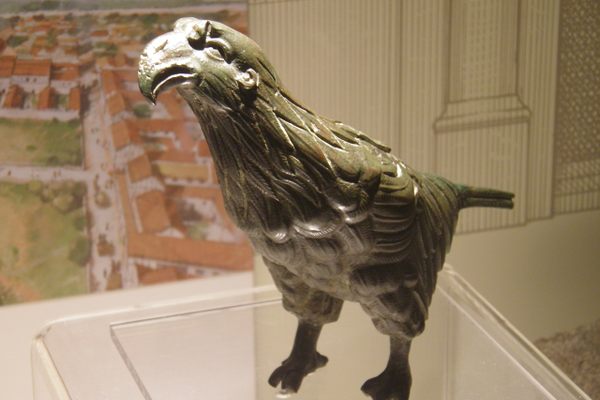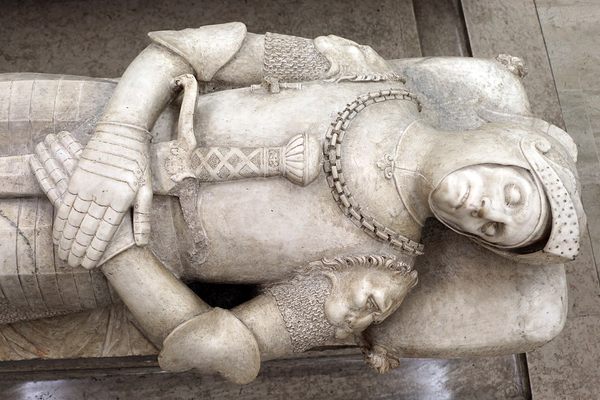About
Plaster figures and emigration seem too far apart to be the theme of one small museum in a hillside town in Tuscany. But they are, and the link is intriguing.
The town of Coreglia Antelminelli was, between the 18th and 20th centuries, famous for its intricate figurines made of of gesso, or plaster, produced at around 30 factories in the area. Mythical figures, artists, leaders, and religious icons were shaped from the difficult-to-make moulds.
Many residents became roving figurine salesmen who travelled throughout Europe and beyond with large baskets of these miniature statues. Often, the figurinai, or craftsmen, themselves even left in search of newer markets and opportunities. They traveled in small groups, and the work of sculpting the statues and selling them was divided among the members.
Some of these nomadic craftsmen stayed away and established homes abroad and later relocated their families. Many others returned with tales of better opportunities and a better financial situation abroad. These stories encouraged younger members of the community to seek a better life, both in Tuscany and other regions. The resultant movement resulted in a rapid drop in the population of Coreglia throughout the late 19th and early 20th centuries. There are now only two plaster moulding factories in the area and none in the town itself.
The Museo della Figurina di Gesso e dell’Emigrazione explores this crucial relationship between the art of the figurine making and the emigration of a large part of the area's population. It was founded in 1975, and combines a study and records centre to allow people who are descended from inhabitants of the Coreglia area to research their family history. It celebrates the beautiful products that were once highly sought after (and now considered very valuable), and includes many artifacts relating to emigration.
In recent years the emigres and their descendants have started to return to the area, often to retire but sometimes bringing young families. The nearby town of Barga also saw significant emigration, specifically to Scotland, and now 60 percent of the town claims to have Scottish relatives. Barga advertises itself as "The Most Scottish Town in Italy" and Scottish weddings with full tartan regalia are a common event in town.
Related Tags
Know Before You Go
Park either near the church or opposite Bar Roma. The museum's keeper is very helpful and speaks good English. Admission in 2017 is only €2 ($2.30).
Flavors of Italy: Roman Carbonara, Florentine Steak & Venetian Cocktails
Savor local cuisine across Rome, Florence & Venice.
Book NowCommunity Contributors
Added By
Published
July 20, 2017
